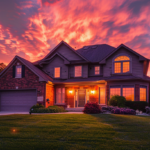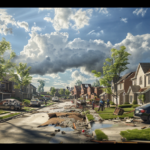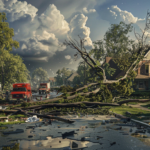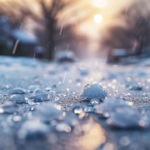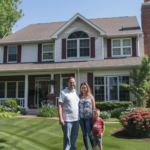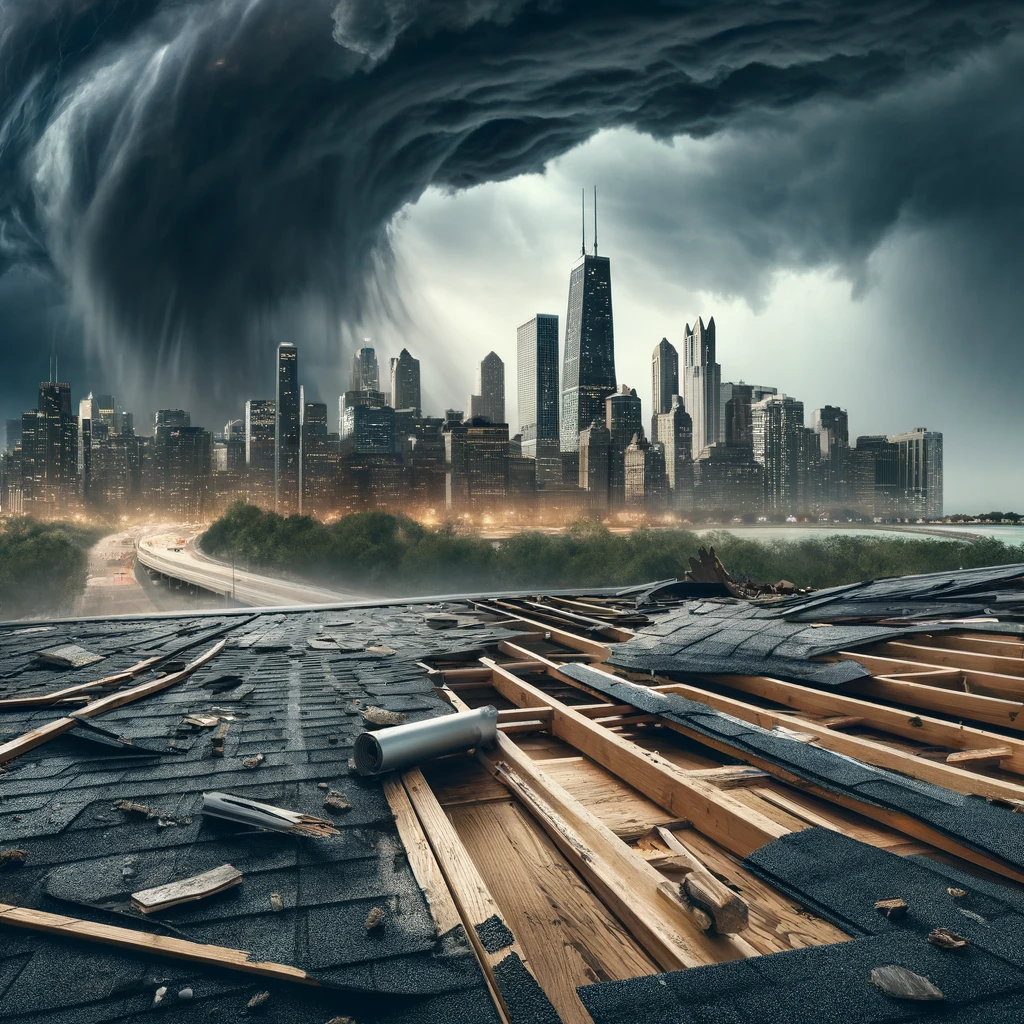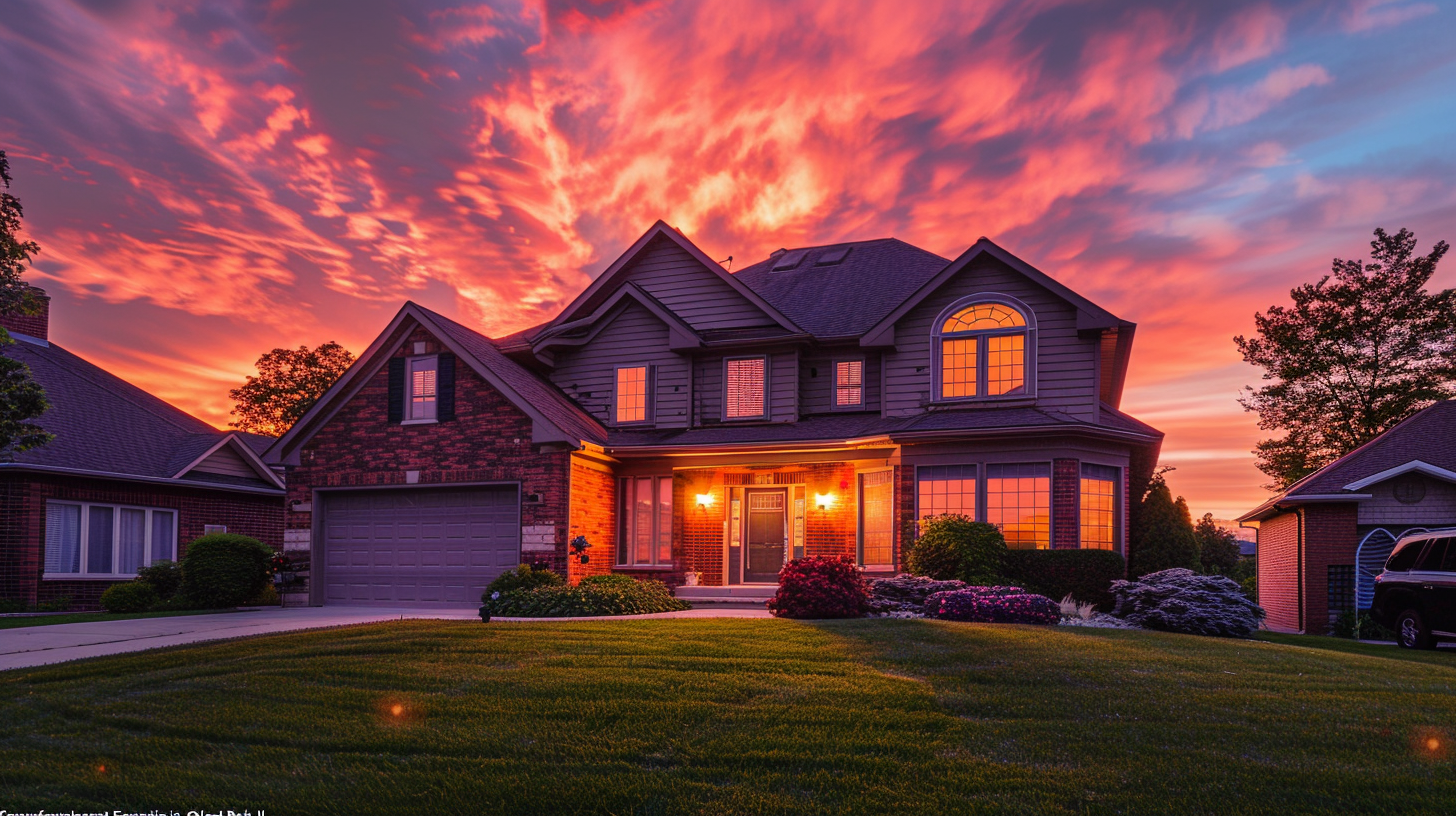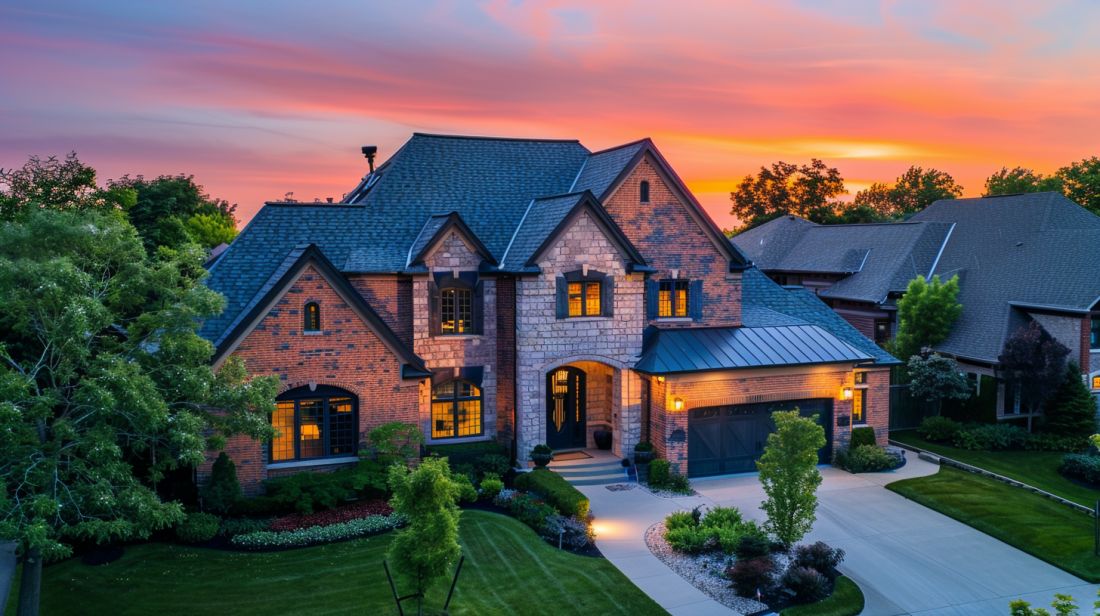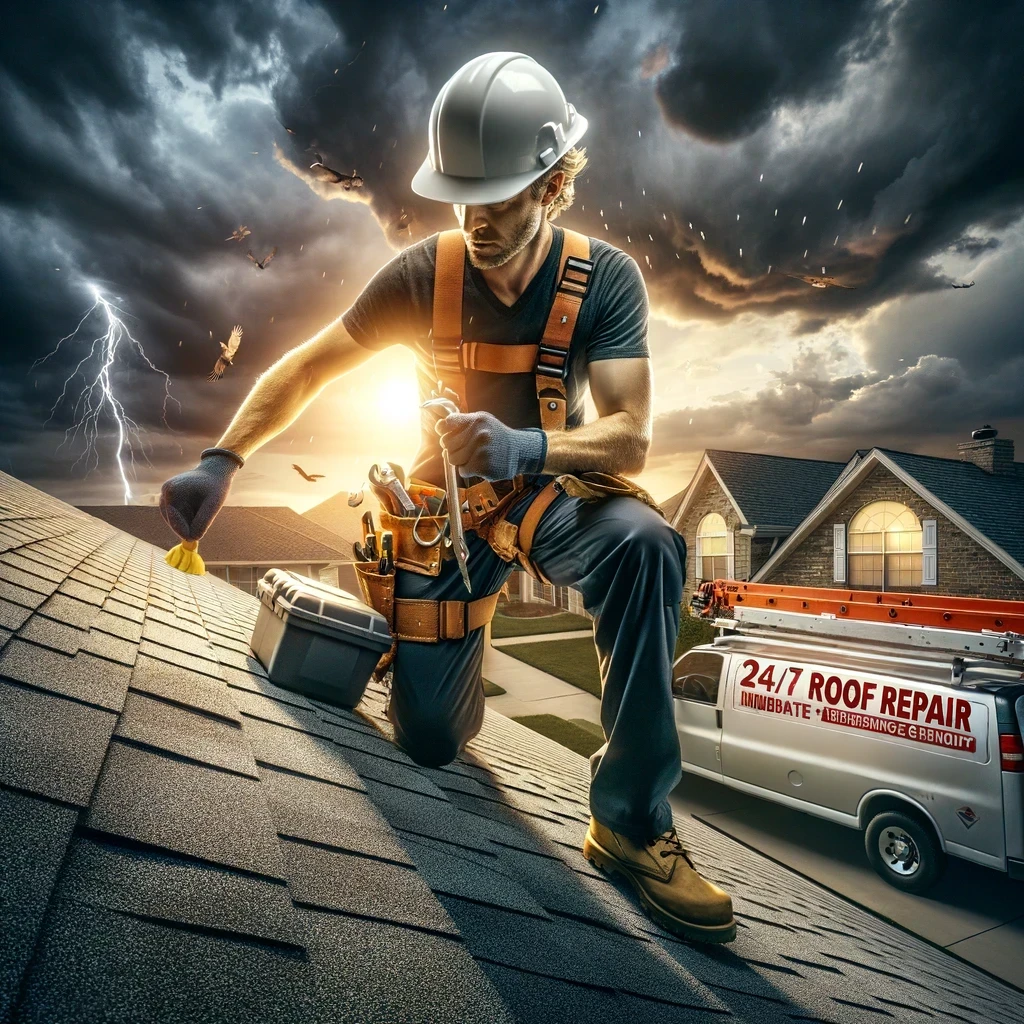When a tornado strikes, it leaves a trail of destruction that often includes damaged roofs. For homeowners in Chicago, understanding how to effectively assess and repair this damage is crucial. This guide provides essential steps and advice for handling roof repairs after a tornado, ensuring compliance with the International Residential Code (IRC) and local Chicago building codes.
Assessing the Damage
- Initial Inspection: Once it’s safe, visually inspect your roof for obvious signs of damage. Look for missing shingles, exposed decking, or damaged flashing. Use binoculars or a drone for a safer inspection.
- Professional Assessment: Contact a professional roofing contractor to conduct a thorough assessment. They can identify less obvious damages and provide a detailed report, which is helpful for insurance claims.
Understanding Building Codes
- IRC Compliance: Ensure any repairs comply with the 2021 International Residential Code, particularly provisions for wind resistance. For instance, roofing materials and installation must withstand the specific wind speeds dictated by local codes in Chicago.
- Local Amendments: Chicago might have amendments to the IRC that specifically address tornado-related repairs. Always confirm that your contractor is up-to-date with these local requirements.
Choosing the Right Materials
- Wind Resistance: Opt for materials rated for higher wind speeds. For example, asphalt shingles should meet the ASTM D3161 Class F rating for wind resistance.
- Durability: Consider materials known for longevity and resistance to wind uplift. Metal roofing, although more expensive, can offer better durability and longer warranties.
Repair Process
- Temporary Fixes: If immediate repair isn’t possible, use tarps to cover exposed areas. This prevents water from entering the home and causing further damage.
- Professional Roof Repair: Hire a licensed contractor for the repair work. They should follow the manufacturer’s guidelines and building codes to ensure the roof’s integrity.
- Inspections and Permits: Before the repair work begins, ensure that all necessary permits are acquired. After repairs, a final inspection by a city inspector or certified professional may be required to confirm code compliance.
Insurance Claims
- Documentation: Keep a record of all damages and correspondence with your insurance. Take photos and retain repair receipts.
- Claim Filing: File your insurance claim promptly. Provide detailed documentation to support your claim, including the contractor’s assessment and any emergency repair receipts.
Preventive Measures
- Regular Inspections: Schedule annual or bi-annual inspections with a roofing professional to identify and fix vulnerabilities before they lead to serious damage.
- Enhanced Features: Consider upgrading to impact-resistant roofing materials if your area frequently experiences severe weather. These can offer better protection and potentially lower insurance premiums.
Conclusion
Roof repairs after a tornado in Chicago require prompt and informed actions. By following the steps outlined above, homeowners can effectively restore their roof’s integrity while ensuring compliance with local building codes. Remember, the safety of your home and its occupants is paramount, and professional guidance is crucial in these situations.
For immediate service or consultation, you may contact us at Allied Emergency Services, INC.
Contact Information:
Phone: 1-800-792-0212
Email: Info@AlliedEmergencyServices.com
Location: Serving Illinois, Wisconsin, and Indiana with a focus on the greater Chicago area.
Disclaimer: This article is intended for informational purposes only. For professional advice, consult experts in the field.
